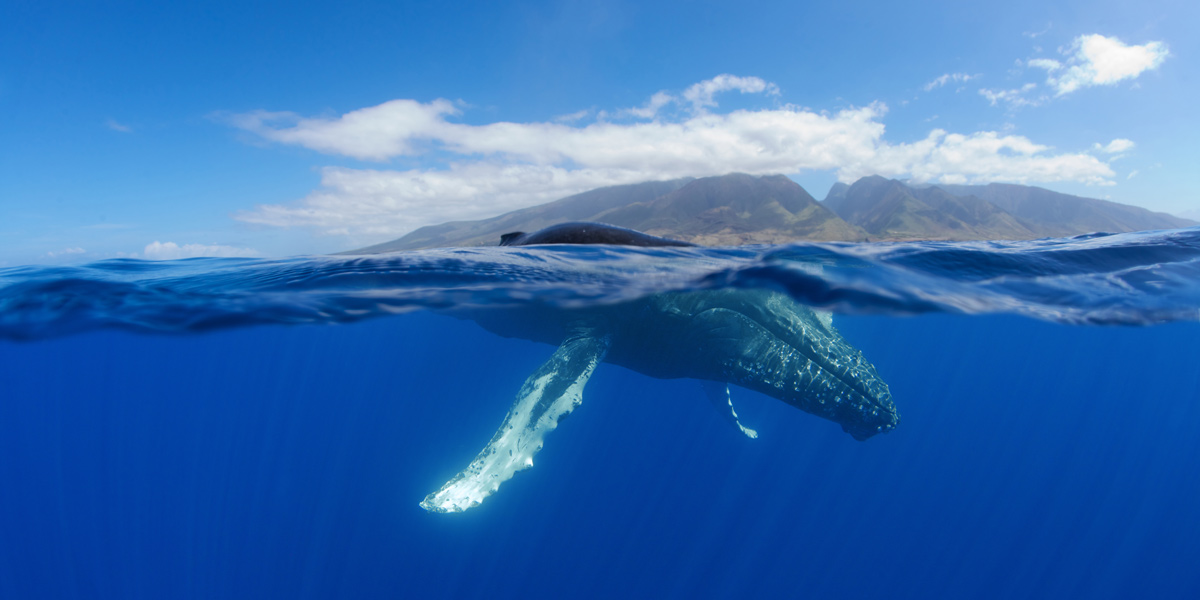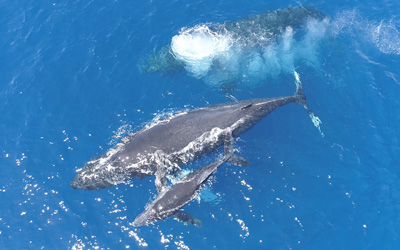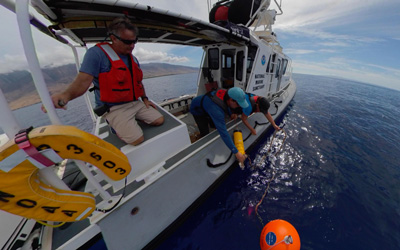News
New Research Shows Koholā Widespread in Papahānaumokuākea

According to research recently published in “Frontiers in Marine Science” by NOAA and other scientists, nearly the entire Hawaiian archipelago is visited by koholā (humpback whales) during the winter and early spring months.

Marc Lammers, research ecologist for Hawaiian Islands Humpback Whale National Marine Sanctuary, is the lead author of the paper.
For years, it was commonly thought that humpback whales did not have a presence in the monument. Since 2006, researchers have used sound monitoring to track long-term trends in biological and human-influenced activities in Papahānaumokuākea. This is much safer and more economical than vessel-based monitoring, and involves putting stationary moored microphones in the water to record sounds such as whale song. In 2007, breeding and calving activity of humpback whales was documented for the first time within Papahānaumokuākea.

In 2020, the Wave Glider, a remotely operated surface vehicle equipped with sound recorders, traveled 2,600 miles over 67 days, recording the presence of koholā throughout the monument. Scientists used this new tool in their quest to study humpback whales as part of NOAA and the U.S. Navy’s Sanctuary Soundscape Monitoring Project (SanctSound).
The result: high and sustained seasonal chorusing levels of whale song measured off not only the inhabited Hawaiian Islands, but every location sampled in Papahānaumokuākea.
The research raises an important question: does more than one population of humpback whales occupy the Hawaiian archipelago?
“Song occurrence patterns suggest that there may be more structure in the distribution of whales in Papahānaumokuākea than previously known,” says Lammers. “It raises questions about whether multiple populations occur across the archipelago.”



